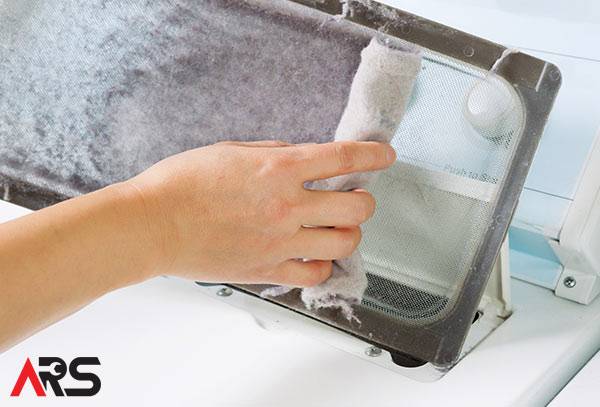Stop shrinkage in cotton, wool, denim, rayon, and more. Learn the exact wash and dry settings, what fabrics need, and how to rescue clothes that already shrank.

If your favorite shirt came out smaller or your sweater suddenly fits a child, you are not alone. Shrinking happens when heat, moisture, and mechanical action change a fabric’s structure. The good news is you can prevent most shrinkage with the right cycle, temperature, and drying method. Use this guide to set up your washer and dryer correctly, choose the best care for each fabric, and try proven ways to unshrink items that already tightened up.
Quick start. How to stop clothes from shrinking today
- Sort by fabric. Keep animal fibers like wool and cashmere separate from cotton, linen, and synthetics.
- Use cold water and the delicate or gentle cycle for anything prone to shrink.
- Choose low heat or air dry in the dryer. Better yet, hang or flat dry sweaters and delicate knits.
- Remove items while slightly damp. Smooth, shape, and finish drying flat or on a rack.
- Follow the garment care label symbols. When in doubt, go colder and gentler.
Why clothes shrink
- Heat relaxes and then tightens fibers as they dry. High dryer heat is the number one cause of shrinkage.
- Moisture and agitation make fibers move and interlock. That is why heavy agitation can shrink or felt wool.
- Fiber memory returns yarns to a shorter, tighter state. This is common with cotton and wool after the first few washes.
Washer and dryer settings to prevent shrinking
| Setting | Recommendation | Why it helps |
|---|---|---|
| Water temperature | Cold for most everyday loads. Warm only for sturdy items that do not shrink. | Cold minimizes fiber relaxation and dye bleed that can come with heat. |
| Wash cycle | Delicate or gentle for shrink-prone fabrics. Normal for towels and sturdies. | Lower agitation means less fiber distortion. |
| Spin speed | Medium for knits and delicates. High for denim and towels. | Very high spin can distort knits. Medium leaves clothes damp enough to shape. |
| Dryer temperature | Low heat or air only. Avoid high heat for cotton knits and animal fibers. | Lower exit temperatures limit thermal shrink. |
| Dry time | Stop while slightly damp and finish by air drying. | Prevents over-drying which locks in shrinkage. |
Fabric-by-fabric shrink risk and care
| Fabric | Shrink risk | Best wash | Best dry | Notes |
|---|---|---|---|---|
| Cotton and cotton blends | Medium to high | Cold, gentle | Low heat or hang | Pre-shrunk helps but can still tighten with high heat. |
| Wool, cashmere, merino | High | Cold hand wash or wool cycle | Flat dry only | Agitation plus heat can felt fibers permanently. |
| Rayon and viscose | High | Cold, delicate in mesh bag | Lay flat or hang | Weak when wet. Do not wring. Expect some growth or shrink. |
| Linen | Medium | Cold, gentle | Air dry, steam to relax | Can tighten in the first wash. Steam to recover size. |
| Polyester, nylon, spandex | Low | Cold or warm, normal | Low heat or air | Less shrink but can warp at high heat. Watch for melting. |
| Denim | Medium | Cold, inside out | Low heat or hang | Expect 1 to 3 percent shrink in raw denim after first wash. |
Care label basics that matter
- Know your fabric care symbols so you can match wash and dry to the garment.
- Fiber content tells the story. Animal fibers and cellulosics like rayon are most sensitive to heat and agitation.
- Pre-shrunk helps, but always use low heat and gentle methods to keep the fit you bought.
How to unshrink clothes
Cotton tee rescue
- Fill a sink with lukewarm water. Add a teaspoon of hair conditioner or gentle fabric conditioner.
- Soak 10 minutes. Gently stretch the fabric underwater to relax fibers.
- Press out water. Do not wring.
- Lay flat on a towel and gently stretch to original dimensions. Pin or weight edges if needed. Air dry.
Wool or cashmere sweater rescue
- Use cold water with a small amount of wool wash.
- Soak briefly. Support the sweater fully when lifting. No twisting.
- Lay flat on a towel. Block to shape by easing seams and measuring against a similar garment.
- Dry flat away from heat. Steam lightly to relax if needed, without pressing down.
Smart laundry habits that prevent shrinkage
- Sort by weight and fabric. Heavy towels beat up light knits which increases shrink risk.
- Mesh bags protect delicate items from tangling and stretching.
- Use the right detergent. High efficiency detergent at the measured dose reduces residue and stiffness.
- Service your dryer. A clogged vent runs hotter and longer. See our guide to cleaning a dryer vent.
- Handle early. Remove clothes promptly. Shake out and smooth seams to set the shape while cooling.
- Air dry when possible. Racks and flat-dry mats are your best friend for sweaters and knits.
When to use the dryer and when to skip it
- Use the dryer on low heat for denim, sturdy cottons, and sportswear if you are short on time. Stop when slightly damp and finish by air.
- Skip the dryer for wool, cashmere, rayon, viscose, embellished garments, and anything labeled dry clean only.
Special tips for sewing and alterations
- Prewash fabric before sewing cotton or knit garments to remove first-wash shrink.
- Buy pre-shrunk when possible and still treat with low heat to protect the finish.
FAQ
Do dryers shrink clothes?
Yes. High heat combined with tumbling and low moisture is the most common cause of shrinkage. Use low heat or air only and stop while items are slightly damp.
Does cold water prevent shrinking?
Cold wash significantly reduces shrinkage compared to warm or hot. Combine cold water with gentle agitation for best results.
What fabrics shrink the most?
Wool, cashmere, rayon, and cotton jersey are most prone. Polyester and nylon shrink less but can deform under high heat.
How do I read laundry symbols?
Follow the wash basin, triangle, square, and iron icons on the label. See the Government of Canada guidance on textile labelling and care symbols.
Is dry cleaning safer for shrink-prone clothes?
Usually yes for wool suits, delicate dresses, and structured garments. For everyday knits, gentle home care often works if you air dry.
Professional help for washer or dryer issues
Faulty temperature sensors, stuck heater relays, or a blocked dryer vent can run a machine too hot which increases shrinkage and even damage. If cycles never end or the dryer runs hotter than settings, schedule washer repair or dryer repair. We serve the Greater Toronto Area and nearby regions.
Service areas
We proudly support Toronto, Mississauga, Brampton, Vaughan, Markham, Richmond Hill, Scarborough, North York, Etobicoke, Oakville, Burlington, Milton, Pickering, Ajax, Whitby, Oshawa, Aurora, Newmarket, Barrie, and Hamilton.
Sources and further reading
- Laundry care symbols and what they mean — American Cleaning Institute
- Textile labelling and care information — Government of Canada
Book an appointment in the GTA. We repair all major washer and dryer brands.

ARS Appliance Repair Service has been trusted across Toronto, Ottawa, and Southern Ontario for over a decade. Our licensed, manufacturer-authorized technicians specialize in repairing all major household and commercial appliances with genuine parts and warranty-backed service. From refrigerators and washers to ovens, dishwashers, and more, we restore appliances quickly, professionally, and correctly the first time, earning the confidence of homeowners and businesses throughout the region.





